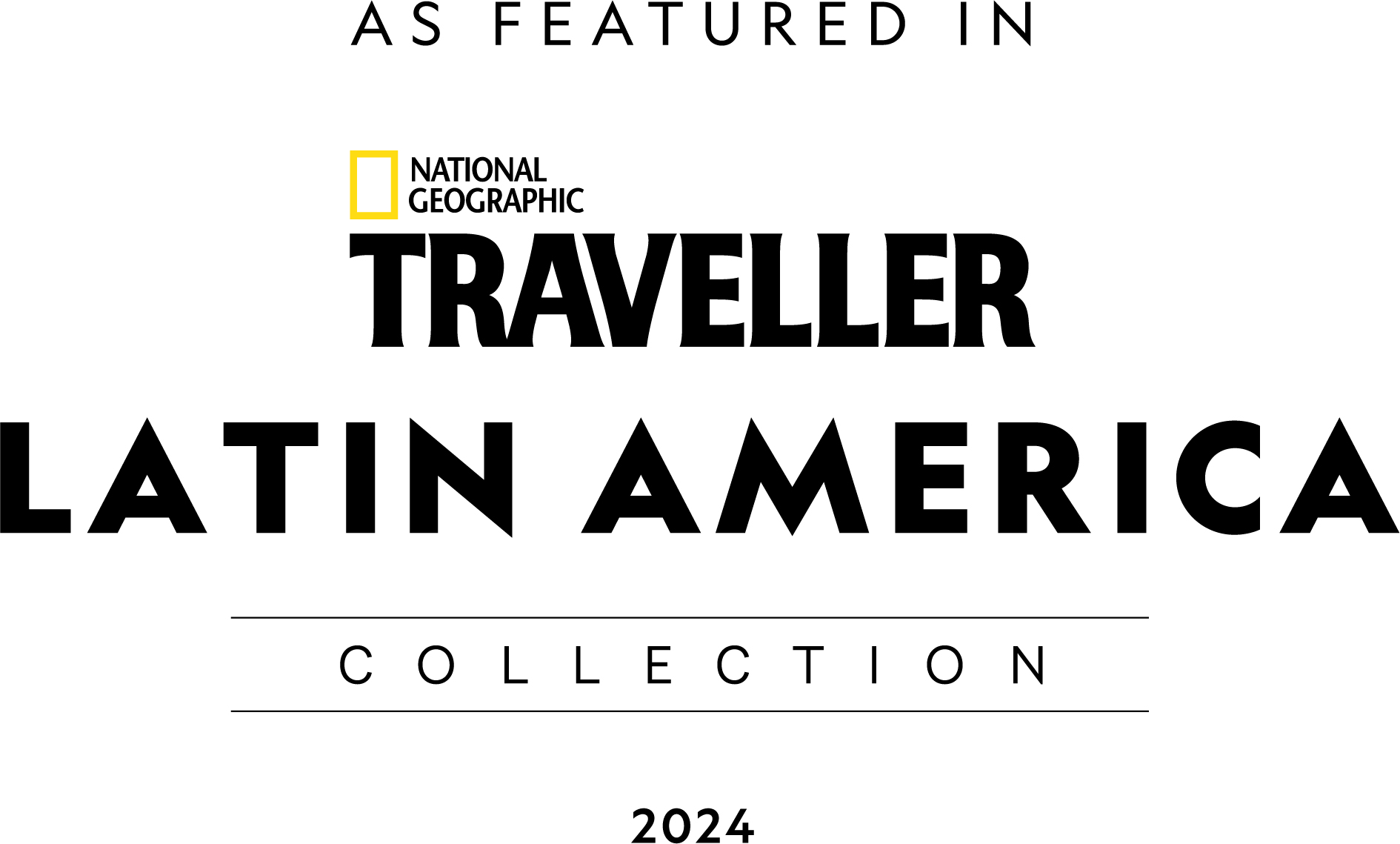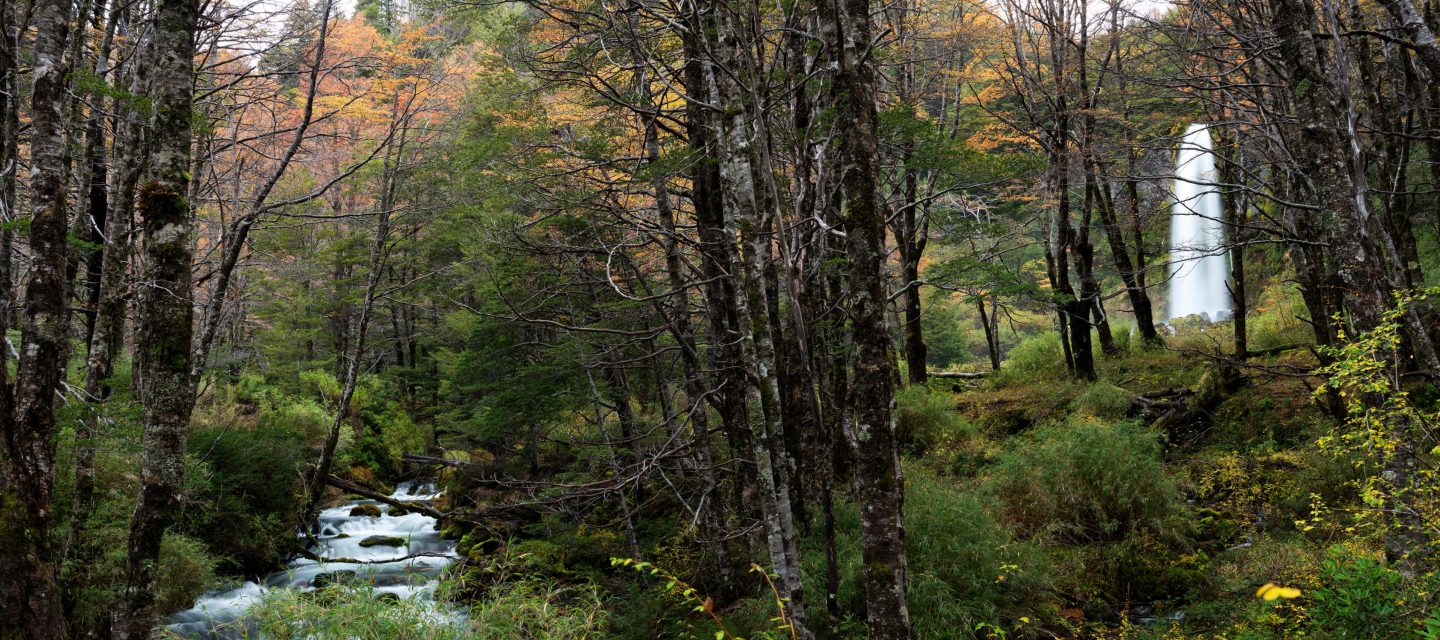
Do you have any doubts about how to plan your trip to Futangue? Don’t worry! Here we can provide you with some tips to optimize your experience in the Park.
Prepare yourself for a day’s trekking
The conditions in the Park are characterized by the constantly fluctuating climate. It is for this reason that we recommend to all our visitors the following 10 essentials for a day’s trekking.
- Water
During the hike you should drink enough water to stay feeling as fresh and hydrated as possible – dehydration is a constant concern. One bottle is not enough as you never know if the weather will turn hot or how your body will react to the physical aspect of the hike. You should never sacrifice the amount of water you are taking just because of a lack of space.
- Protective clothing
The weather is unpredictable and a beautiful sunny day can convert rapidly in to a downpour, from one moment to the next. Don’t forget to take a thin waterproof jacket or windcheater to protect you from all outcomes. And try not to take too many articles of clothing either, as it will be you who will be carrying your own pack throughout the hike.
- First aid kit
Don’t leave without a comprehensive first aid kit in your backpack. This needs to include items such as alcohol, Elastoplast, bandages, cotton wool, scissors, dressings etc. And then incorporate anything else you feel is necessary in the same pack.
- Sunblock and repellent
Protection from the sun has to be a priority during your hike. Don’t forget to bring sun cream with a high sun protection factor, as well as lip balm also containing SPF. You should also bring insect repellant, especially if you are following routes through a lot of vegetation.
- Hat and sunglasses
Bring a hat and sunglasses to complement your sunblock. The sunglasses will not only help to shade your eyes from the sun but they will help protect them from dust.
- Knife
It is always useful to carry a small knife in your backpack in case you need to open a bag, cut rope or string or for any form of accident.
- Snacks
Whether your hike is long or short, it is necessary to bring something to eat. For short routes, think about packing things which are light to carry but which load you with energy, such as granola, energy bars, fruit, nuts etc.
- Torch
This is more necessary for longer trails but it is always important to have one close at hand.
- Towel
There are some routes which take you through or near to waterfalls and lakes, in which you are permitted to bathe. A towel is also useful for drying off perspiration which can be an irritant while walking.
- Bags
These are indispensable in which to keep the remains of uneaten food or rubbish during the hike, to conserve surroundings and leave no traces behind after picnics. You can also use bags for wrapping wet or dirty clothing in, so that you can carry it comfortably in your backpack.
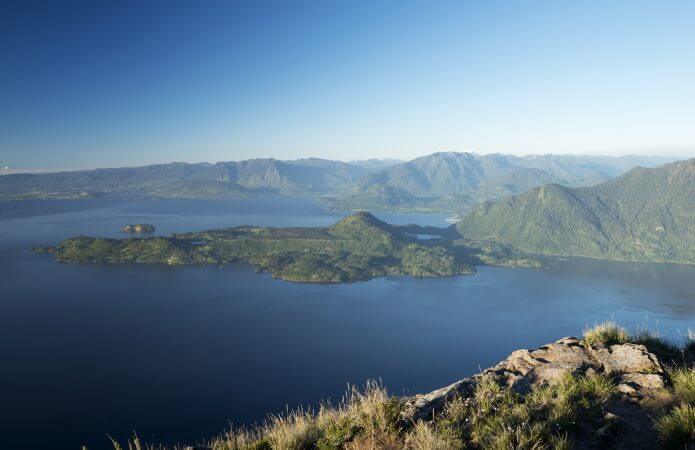
Basics for a day of Fly Fishing
The equipment needed for this kind of fishing is undoubtedly specialized, as fly fishing requires, among other things, specific materials and accessories.
- Rods
The main characteristics belonging to these types of rod are their high flexibility and lightweight build, even though these details depend mostly on the predilection of the angler and the type of waters to fish, plus other influences such as the weight of the line or size flies. They are manufactured in different materials such as bamboo, fiberglass and graphite mainly, they come in different numbers and with 3 main actions according to their degree of flexion, we will find fast, medium and slow action rods, the latter being the ones that achieve greater flexibility and fast are more rigid.
2. Reels
For these days, the reels with large arbor are the most popular because they print less memory to the lines and the latter can be removed and collected more quickly. Among its functions is to house the line in conjunction with the backing and leader, also helps balance the equipment with the rod and come with a number that is aligned with the number of the rods. On the other hand, it acquires great importance in the fisher’s gear when it comes to capturing large fish since the brake they have is very helpful to achieve that precious photograph with a trophy fish.
3. Fly fishing line
Definitly, it is one of the parts of the equipment that most differentiates itself from other forms of sport fishing, since in fly fishing a heavy line is used instead of weights to throw the lure. The fly fishing line has singular characteristics in weight, size and thickness and depending on these we can give some applications or others. They consist of two parts that are the “core” and the “coating”. The core can be a nylon or a multifilament coated with thermoplastic polymers that make up the coating and this part has inlays of different elements to give properties such as flotation (with air microbubbles) or sinking (with glass particles, lead or tungsten). Another important feature is the profile of the line that has a special influence on the distance and the way of falling on the water to present the flies, since the same line has thicker sections than others.
4. Leader
It is the element that connects our fishing line to the fly and is in charge of giving continuity to the energy that we print with the rod to the line, dissipating it progressively until we reach the fly.
It also becomes a great ally as it is a window of free vision between the fly and the line, allowing to present our flies naturally and control without having to show the line to the fish and thus avoid frightening it.
5. Tippet
Tippet is the terminal part of the leader, is the one that connects the fly. The choice of its diameter is based in the fact that it is that part that is closest to the fly and therefore the most visible and close to the fish, always remembering that it must be related to the number of hooks.
6. Backing
It is used to tie the line to the reel and to have a reserve line in case a fish gives us the fight of our lives. Because the lines measure an average of 28 meters, they are used as 90 meters of backing.
7. Flies
They are hooks covered with hairs, feathers and synthetic materials that try to imitate the food of the trout, this imitation can be impressionistic, suggestive or realistic. They are classified into two major categories, those that float and those that sink, for each of them there are materials that allow them to stay on the surface of the water or to be under it, said last we will find 5 categories:
- Dry Flies
- Nymphs
- Streamers
- Terrestrials
- Wet or Emergers
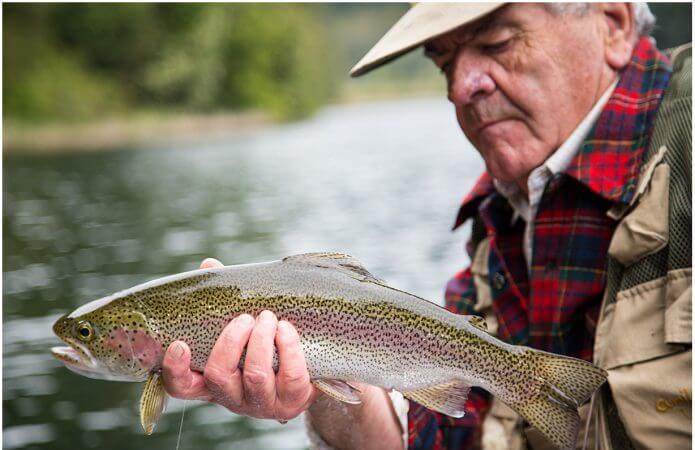
When paddling a Kayak
There are two types of kayaks, the closed ones and the open ones called “Sit on top”.
To enjoy them and avoid injuries, we are giving you 4 tips to consider when paddling.
1.- Maintain a good position in the kayak to allow more torso rotation and minimize tension in the lower back.
2.- Try to paddle slightly inclined towards the front of the kayak.
3.- Do not lift the paddle much to minimize the deviation of the wind and help keep the arms and shoulders aligned.
4.- Keep your hand grabing the oar at the height of your eyes, never higher.
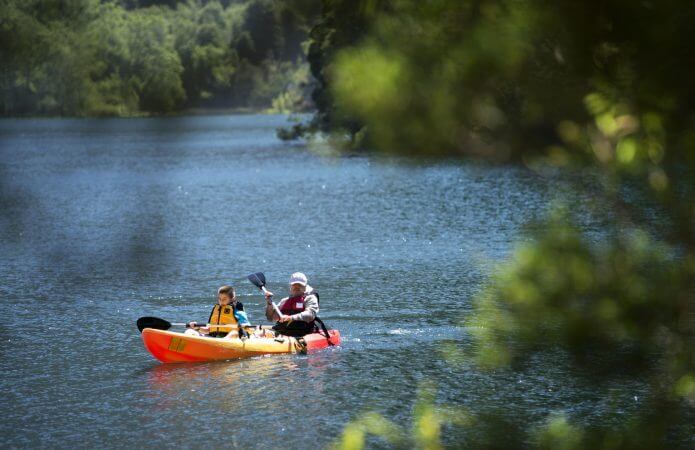
Bring the right gear
It is important to be prepared for sudden climate changes at any time of the year since the weather
conditions in the mountain are characterized by unpredictability. Be always equipped with a wide
range of clothing options; be sure to bring a warm jacket and the right equipment to protect you
from the rain, even in summer.
Equipment for outdoor activities:
Clothing
Dressing with the layer system is the best alternative in the South of Chile, taking into account that
each layer has a function that will allow it to adapt to changing weather conditions and thus be
always prepared.
We recommend the following:
– First layer: In direct contact with the skin and is ideal for the management of perspiration
and moisture (thermal tights, capilen, merino wool, synthetic, polyester, for the summer months it is advisable to have sun protective and fast dry clothing).
– Second layer: A fleece jacket to protect from the cold and wind.
– Third layer: The latter will protect us from wind and rain (jackets equipped with waterproof membranes such as Gore-Tex or similar). It is also very useful to have a waterproof trouser cover.
Shoes
To carry out outdoor activities that we offer in the park, we recommend the use of high trekking shoes to protect the ankles and ideally have Gore-Tex membrane, so that moisture is not
transferred to your feet excessively, and / or sneakers for the softer trails and commuting around
the hotel.
Personal articles
- Sunscreen and lip balm SPF 30 or higher
- Sunglasses
- Cap for the sun and for the cold
- Trekking pants, short and long
- Waterproof pants
- Backpack for hiking, approximately 20 to 25 liters
- Winter gloves
- Camera and necessary accessories
- Binoculars, ideal for bird watching
- Reusable water bottle for hydration
- Drugs you consider necessary
- Flashlight
For use inside the hotel facilities:
Clothing
Our hotel is a place designed to help you disconnect from day-to-day worries, where clothing can
be totally informal. You must contemplate warm clothing for the use of outdoor common spaces in case of cold days and / or nights. Do not forget your swimsuit for the use of Spa facilities.
Shoes
You can bring comfortable shoes and / or sneakers to walk in the hotel’s interior and exterior areas.
Sandals can be useful for use in the pool and spa sector.
Personal articles
Our hotel offers its guests towels and robes for personal use. We also have hair dryers in all our rooms and organic amenities made of plants and berries from the native forest.
Regulations
The Park Administration cannot take any responsibility for accidents which may occur as a result of any natural phenomenon, nor for negligence, poor preparation or recklessness by visitors. For your safety, we have put together a set of rules which you must follow throughout your visit:
- It is absolutely forbidden to drop litter along the hiking trails and in the forest. People who bring a picnic must take with them all wrappings, papers and bottles etcetera, without leaving any traces behind. Dropping litter is considered a serious breach of the Park’s rules.
- It is strictly forbidden to camp inside the Park, except for guided groups who carry authorization from the Park Administration.
- Camping equipment such as tents, sleeping bags, saucepans and stoves are forbidden in the Park.
- It is forbidden to build any fires along the hiking trails, near to them or in any open air area.
- It is forbidden to smoke in the Park
- Do not wash anything in the lagoons or estuaries.
- Do not move, alter or cause damage to any of the Park’s infrastructure.
- It is forbidden to fish or enter with any fishing equipment without authorization from the Park Administration.
- It is forbidden to enter with kayaks, canoes, hard or plastic boats, stand up paddles or any other type of nautical vessel. Water games are not permitted.
- Motorcycles which don’t belong to the Park are not permitted access to the hiking trails.
- Pets are not permitted entry to the Park for the possibly negative effect they can have on the wild fauna.
- Horses which do not belong to the Park are not permitted access to the hiking trails.
- It is forbidden to cut flowers, ferns or any part of any tree, or to take any cuttings from any plants or any sample from any animal in the Park. Our natural environment must not be disturbed.
- Do not touch reptiles, amphibians or insects.
- Do not feed any animals seen along any route or pathway, do not leave any food out in the open air as the native fauna can become accustomed to this type of food and so leave its wild and natural state.
- It is forbidden to enter the Park with any weapons.
- It is forbidden to hunt animals.
- Drones are forbidden entry without authorization from the Park Administration.
- Park guards are constantly present to ensure all regulations are maintained and it is their duty to report any infringements.
- Futangue Park reserves the right permanently to provent entry to anyone who deliberately fails to comply with Park regulations, without prejudice to legal actions that may be taken against offenders and other punishments and fines that may be applied by administrative authorities, such as SAG or CONAF .
Hiking
- Children must remain under constant supervision, above all on jetties, at look-out points, on bridges, wooden walkways and cliffs.
- Always keep to the main paths to avoid accidents and causing damage to the fragile ecosystems along the trails.
- Ensure you always remain at a good distance from the edge of ravines and cliffs.
- Take extra care when crossing bridges, walkways, jetties, using steps and look-out points. These areas can all be slippery or have loose boards, given the constant rain which amounts to 4000mm per year.
- Avoid leaning against or sitting on any handrails or railings at the look-out points or on bridges. Only two people at a time may cross the hanging bridges.
- Make sure you pack a comprehensive and fully adaptable hiking kit for all climatic conditions. Remember to use strong hiking shoes or boots which have a good tread.
- Use the hiking trails and pathways in groups of at least two people. Avoid separating from the group you are part of, always take water and a good head-torch, even for a short walk during the day.
- When embarking on a group excursion, each member must take his or her own liquid for hydration, as well as food in case anyone is separated from the group. Establish meeting points (in the vehicle, at the start of the trail etcetera)
- Medical problems can be easily exacerbated by the physical demands of hiking. Each member of the group must know his or her own physical limits and pay particular attention to how to respond to each of the hikes.
- In case of heavy snow preventing visibility of the trail, do not continue.
- If you surprise a wild boar or a puma, maintain distance at all times and do not approach. These animals avoid people but they can also feel threatened and may attack.
- Kindly only use the purpose-built toilet blocks within the Park and nowhere else.
- Please address any questions to the Park information center or to one of the Park guards before embarking on your expedition and always register your plans for the day.
Cyclists
- It is recommended that cyclists constantly use a helmet and exercise caution to avoid accidents. The descents must be negotiated slowly, giving priority to any pedestrians along the trails.
- Dismount if the trail is soft or muddy.
- Always take a bicycle repair kit.
Weather
- Weather conditions can be adverse and unpredictable in the upper parts of the Andean mountain range. Snow drifts and low temperatures are common between the months of June and October.
- Check the weather forecast for Riñinahue before visiting the Park.
- The Puelche or Puiga winds (strong easterly winds) considerably increase the probability of fallen trees and fires along the trails. These conditions may cause temporary closure of the Park.
- Avoid mountain summits in bad weather or electric storms.
Fishing
- The fishing season opens every year on the second Friday in November and closes on the first Sunday in May the following year.
- A valid fishing license must be carried at all times. This can be obtained at http://pescarecreativa.sernapesca.cl/
- Fishing is permitted only with artificial flies and hooks without bait.
- Catch and release of all fish, irrespective of the species.
- All species, if caught, must be returned alive to the water. If possible, the fish should be identified (and/or photographed) and its capture and release reported.
- There may not be more than 6 fishermen or 3 boats fishing at any single time on the lakes. Each boat may carry up to 2 fishermen.
- All visitors must exercise caution at all times. It is their responsibility to use life jackets aboard any vessel.
- Fishermen must take away everything they bring; that is to say all leftovers, rubbish, wrappings, papers, personal belongings etc.
- It is customary to tip the guide and/or boatman.
Fallen Trees
- Futangue Park extends across an area of 13.500 hectares and is covered by 95% of native forest.
- Each hectare of forest can be subject to eight cubic meters of fallen organic material per year, whether in the form of leaves, branches or whole trees. The latter fall for different reasons: soil conditions, insects, disease, wind, snow, fire, human activity etc.
- Despite the best efforts of the Park team to check and remove any trees which may be a threat, it is impossible to identify all the trees at risk in time. We reiterate that it is not possible to guarantee your safety.
Floods and Landslides
- These phenomena are not frequent along the trails, however in the past they have occurred following extremely heavy rain amounting to over 100mm in a single day. Landslides are an unpredictable risk in mountainous areas. Please be aware of your surroundings.
Vehicles
- The use of vehicles within Futangue Park is entirely the visitors’ responsibility and should not exceed 30km per hour.
- Recommended for use are all-wheel drive vehicles, suitable for unpaved roads and of sufficient height to clear the ground.
- The tracks are narrow and maximum caution is required to avoid accidents with vehicles coming from the opposite direction.
- Do not leave any objects of value in your vehicle. The Park Administration cannot be held responsible for loss or theft.
- If cyclists or walkers are sighted along the trails, cars must stop and wait for them to pass.
- Do not park your vehicle where it may impede access to a viewing point.
- Only 4×4 vehicles are permitted access to the Cerro Mayo and River Futangue entrances.
- The Park Administration cannot be held responsible for scratches, dents and any other damage which might occur to the vehicle, resulting from collisions and condition of the tracks, tree branches, ditches, rocks and third party activity.
Lakes and Rivers
- Lakes in the Park are not staffed by lifeguards and may be located far from medical assistance. The decision to swim is taken at your own risk.
- The use of lifejackets is obligatory when navigating a kayak or any other craft. We recommend that children use lifejackets.
- Watersports and swimming in the lakes are only permitted in the summer.
- Under no circumstances is swimming permitted in rivers in the Park.
Public Health
- In many rural and foothill areas rodents may be found which transmit the Hantavirus, such as the long-tailed pygmy rice rat. However only 4% of the species carry the virus.
- Walking along the trails does not expose you to any risk of the virus, as it is destroyed by sunlight.


